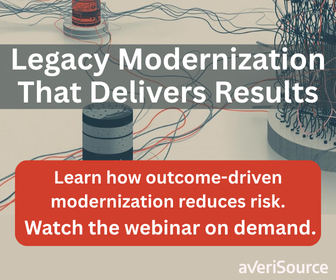The backbone of global business operations runs through mainframes—which handle a staggering 30 billion transactions daily, hold 80% of the world’s business data, and process 90% of credit card transactions. Mainframes are not relics of the past but are integral components of today’s hybrid IT landscape. As the world’s digital economy demands more speed and reliability, how businesses manage and optimize the resources consumed by mainframe applications is undergoing a revolutionary transformation.
Here are a few key steps you can take to shift prioritization from IT resource management to business impact.
Embrace the New Era of Mainframe Software Licensing
Traditional pricing models, which emphasize managing capacity, have given way to innovative new models that enable technical teams to focus on real-time performance and application health. This change better aligns with modern business needs—services must be available 24/7, applications must perform flawlessly, and capacity constraints can no longer hold businesses back.
IBM’s Tailored Fit Pricing (TFP) and Broadcom’s Mainframe Consumption Licensing (MCL) are at the forefront of this shift. These modern pricing models are designed to be transparent, predictable, and flexible, allowing organizations to optimize systems based on business demands rather than architecting to minimize software costs. With TFP and MCL, the old method of managing workloads based on the Rolling Four-Hour Average (R4HA) is no longer relevant. Instead, pricing is based on MSUs consumed, eliminating the need for tedious manual capping or automated resource management.
This flexibility empowers IT departments to focus on deploying the right workloads on the right platforms based on technical fit—without being shackled by the limitations of outdated software pricing models. You can configure systems to support optimal response times and service level agreements.
Broadcom’s MCL model provides additional advantages by excluding development and test environments from charges, and allowing for the rollover of unused MSUs into the next true-up period.
Shift Your Staff’s Focus from Capacity to Performance
In the past, IT teams dedicated significant time and resources to managing capacity—analyzing historical growth trends and projecting future capacity needs. Architects and developers spent significant time optimizing R4HA, and job runtime schedules were dictated based on what resources an application was expected to consume.
MSU-based pricing has reduced the need for overly detailed capacity planning. Capacity management teams can now focus on the performance, availability, and accessibility of business-critical applications. In a sense, processing power and storage have become commodities, and excessively detailed capacity plans are no longer required. A general usage trajectory is sufficient for planning purposes.
In the digital economy change in workload including spikes in workload is expected. Automation plays a key role in this shift from managing resources to managing applications. Mainframe systems detect spikes in workload and automatically provision additional processing power or storage to maintain performance. When demand decreases, the systems de-provision the resources, ensuring efficiency without human intervention. This automation allows IT teams to focus on what truly matters: ensuring applications are available, reliable, and fast.
Take a New Perspective on Resource Optimization
While resource optimization remains important, it is no longer the driving force behind IT management. In the past, teams meticulously tracked CPU usage and storage capacity to avoid wasting resources. Today, however, the cost of computing has decreased to the point where micromanaging resources is no longer cost-effective. Now, cleaning up wasted resources is seen as a housekeeping task—it’s essential but not mission-critical unless performance is directly impacted.
This shift in focus means that IT teams must evolve. Instead of spending their energy in endless video conferences proving that their infrastructure isn’t the source of an issue, they must now focus their attention on understanding and addressing the impact of any problems on business services. It’s no longer about infrastructure management; it’s about business service management.
Prioritize Business Services Above All Else
The new reality for IT teams is that their primary mission is ensuring that the business services and applications that drive revenue and customer satisfaction are always up and running. While a business may rely on hundreds or even thousands of applications, the top 20% of those apps often account for 80% of the business’s impact. These key applications must be prioritized.
Modern tooling is a game-changer here. Site Reliability Engineers (SREs), application developers, and operations teams can now work together more efficiently, using advanced tools that offer visibility into the health of critical applications. With these tools, teams can respond more quickly to issues and ensure continuous, reliable service.
Unveil Hidden Insights with End-to-End Observability
For SREs, the ability to see across the entire business service is critical. Services often start on a mobile device or browser, pass through web servers, and eventually land on a mainframe. The challenge is that the mainframe has long been a “black box” in terms of visibility within enterprise observability tools.
Broadcom’s WatchTower Platform™ addresses this challenge with its z/IRIS capability. Leveraging the industry-standard OpenTelemetry framework, z/IRIS provides the necessary metrics and traces to deliver end-to-end observability. This data is visualized through familiar enterprise observability platforms like DataDog, Dynatrace, and AppDynamics. With this new visibility into the mainframe, SREs can pinpoint application issues, identify slowdowns, and resolve them quickly.
Unveil Hidden Application Insights on the Mainframe
One of the persistent challenges in mainframe environments is the lack of visibility into what’s truly running. WatchTower’s Application Profiler (AP4z) capability offers a solution by discovering and visualizing mainframe applications. It gives users a detailed view of application flows and key attributes, allowing them—for the first time—to truly see their application flows so they can measure the impact of changes and optimize accordingly.
Dive Deeply into Your Applications
When a mainframe application experiences a significant change in its performance profile, additional inspection is required. Broadcom’s Mainframe Application Tuner provides users with deep, detailed diagnostic application insights. By focusing on the application level, IT teams can identify and resolve performance bottlenecks more effectively.
The Future of Mainframe Management is NOW!
The shift from managing IT resources to driving business success is not just a trend—it’s a necessity in the modern economy. By prioritizing application health, performance, and availability, enterprises can ensure they meet customer demands and stay competitive. Broadcom’s Mainframe Consumption Licensing models and advanced tools, like the WatchTower Platform, make this transformation easier, empowering IT teams to focus on what truly matters: driving the business forward.
As businesses continue to evolve, mainframes will remain a vital component of the IT landscape. But the way they are managed will continue to change—placing business services, not IT resources, at the center of the strategy. And Broadcom will continue to lead the way in this transformation.









0 Comments